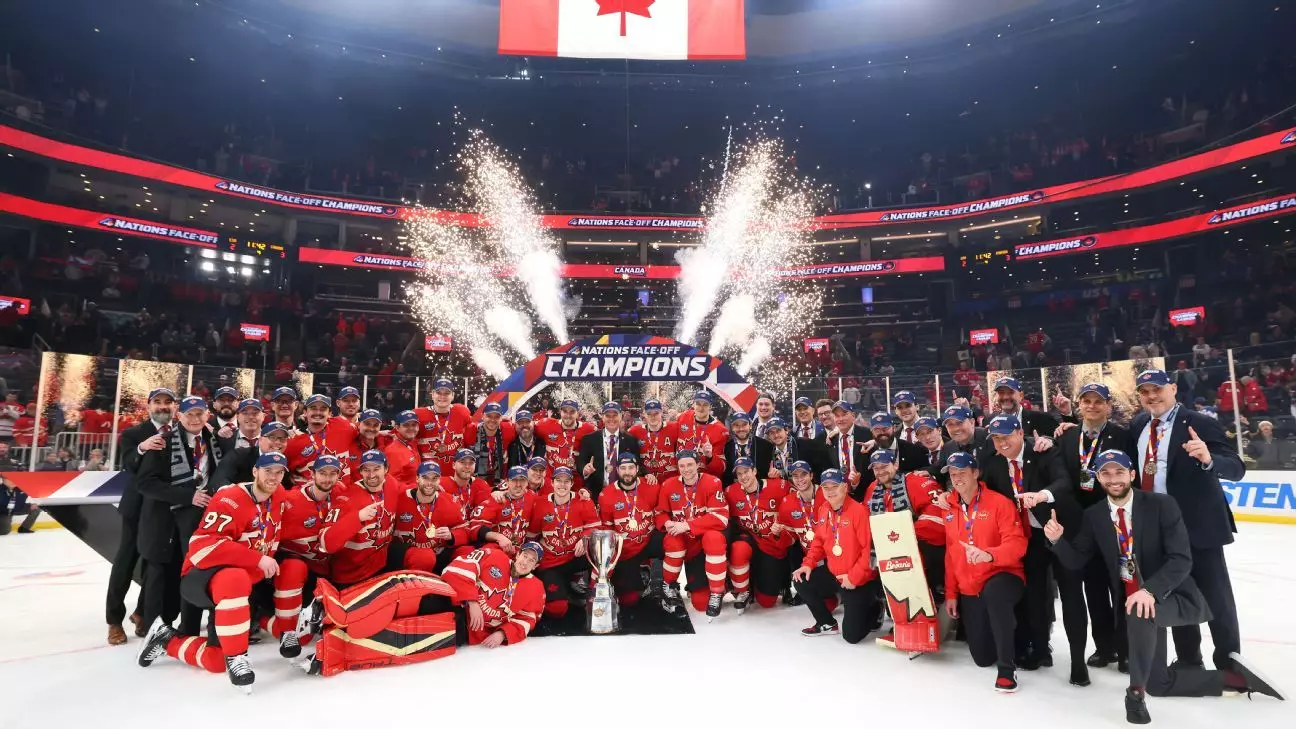The National Hockey League (NHL) is on the cusp of a transformative phase, particularly with its legendary All-Star Game. Following the success of the 4 Nations Face-Off, which effectively redefined the competition atmosphere from a lackluster exhibition to an adrenaline-fueled showcase, the NHL is primed for a monumental shift. Scheduled for February 2026, the All-Star festivities will unfold at the New York Islanders’ UBS Arena, with a vision to elevate the experience to unprecedented heights. This evolution speaks volumes about the league’s willingness to adapt and innovate in a rapidly changing sports landscape.
NHL Commissioner Gary Bettman’s remarks following the league’s annual general manager meetings illuminate this ambition. “We want to make sure whatever we do is up to the standards that we’ve created,” he noted, prompting excitement and speculation about what the NHL has up its sleeve. Given that Bettman’s history has often steered towards cautious traditionalism, this openness to explore new avenues is notably refreshing.
The Impact of a Global Perspective
One of the key factors that led to the NHL’s new trajectory is the unexpected triumph of the 4 Nations Face-Off. This tournament, which brought together world-class players from Canada, the United States, Sweden, and Finland, struck a chord with fans craving authentic competition over gimmickry. In a sport often characterized by its physical demands and strategic intricacies, the return to a best-on-best format rekindled a competitive spirit reminiscent of past international events. By featuring major stars like Connor McDavid — who clinched victory for Canada with a spectacular overtime goal — the event underscored a collective desire among fans for engaging hockey that goes beyond the mundane.
This momentum has prompted the NHL to reevaluate the traditional All-Star Game. The latest edition, scheduled to take place in a highly visible venue like UBS Arena, suggests the league’s intent to package the event as a must-see attraction, rather than just a seasonal milestone. It raises intriguing questions about how the NHL will blend its rich heritage with modern expectations.
Toward a Broader Olympic Fabric
Bettman’s discussions regarding potential participation in the upcoming Olympics reflect a strategic duality: embracing international competition while rethinking domestic showcases. Not only does the league face demands from its players and fans for a return in 2026 after absences in 2018 and 2022, but it must also navigate the intricate logistical dynamics involved with international play.
The positive reception of the 4 Nations serves as a catalyst for integrating Olympic elements within the All-Star framework. This pivot signals the NHL’s recognition that fans crave authentic match-ups featuring the best hockey talent, and not just any fleeting entertainment. The modern sports spectator longs for emotional engagement that transcends the usual tone-deaf charity match atmosphere often found in traditional All-Star formats.
Negotiation as a Form of Growth
As the NHL gears up for collective bargaining discussions, set to begin in April, it becomes clear that the league isn’t merely looking forward to a new All-Star format. Instead, it is also tackling industry-wide complexities surrounding contracts, player eligibility, and the evolving nature of junior hockey. Bettman emphasizes a collaborative approach, expressing positivity about fruitful negotiations, indicating that communication between league officials and player representatives is increasingly constructive.
The recent NCAA rule changes, which allow Canadian Hockey League players to retain college eligibility despite signing entry-level NHL contracts, point to a significant shift in the sports landscape. This adaptability underlines a broader recognition of the shifting priorities among young players, balancing professional aspirations with educational opportunities. However, issues like playoff format adjustments seem to be off the table for now, allowing that aspect of the game to remain a steady anchor amidst frequent changes elsewhere.
Transforming Draft Traditions
In a bold move away from tradition, the NHL plans to revamp the entry draft process. By decentralizing the event, allowing individual teams to operate from their home cities, the league is not only responding to evolving fan expectations but also harnessing technology for enhanced engagement. This shift underscores Bettman’s willingness to experiment, making the draft feel more intimate and tailored rather than just a spectacle focused on media applause.
This thoughtful approach to innovation speaks to the NHL’s quest for relevance in an era where fan experiences dictate attendance and viewership. The acknowledgment of clubs’ interests directly influences the direction of these changes, ensuring that the new format reflects collective desires instead of top-down directives.
The NHL’s future looks promising as it embarks on this ambitious reinvention, merging the electricity of international hockey with the tradition of the All-Star Game while fostering open dialogues with players and teams. As they navigate through these intriguing developments, fans can expect a richer, more inclusive experience that will redefine how hockey is celebrated. The synergy of global competition and local engagement could unleash a new wave of passion for the sport that has long been beloved by many, setting the stage for an unforgettable era in hockey history.

